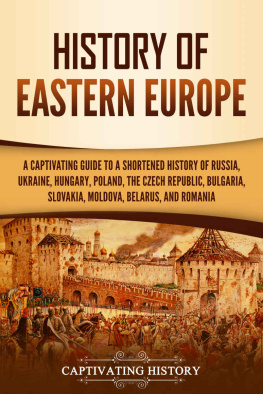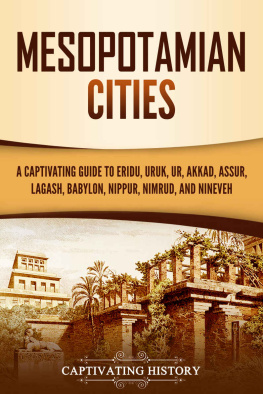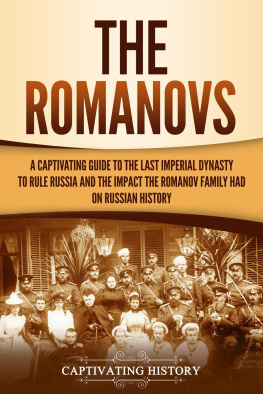Captivating History - The Afsharid and Qajar Dynasty: A Captivating Guide to Two Iranian Dynasties Who Ruled Persia from 1736 to 1925
Here you can read online Captivating History - The Afsharid and Qajar Dynasty: A Captivating Guide to Two Iranian Dynasties Who Ruled Persia from 1736 to 1925 full text of the book (entire story) in english for free. Download pdf and epub, get meaning, cover and reviews about this ebook. year: 2019, genre: Romance novel. Description of the work, (preface) as well as reviews are available. Best literature library LitArk.com created for fans of good reading and offers a wide selection of genres:
Romance novel
Science fiction
Adventure
Detective
Science
History
Home and family
Prose
Art
Politics
Computer
Non-fiction
Religion
Business
Children
Humor
Choose a favorite category and find really read worthwhile books. Enjoy immersion in the world of imagination, feel the emotions of the characters or learn something new for yourself, make an fascinating discovery.

- Book:The Afsharid and Qajar Dynasty: A Captivating Guide to Two Iranian Dynasties Who Ruled Persia from 1736 to 1925
- Author:
- Genre:
- Year:2019
- Rating:4 / 5
- Favourites:Add to favourites
- Your mark:
- 80
- 1
- 2
- 3
- 4
- 5
The Afsharid and Qajar Dynasty: A Captivating Guide to Two Iranian Dynasties Who Ruled Persia from 1736 to 1925: summary, description and annotation
We offer to read an annotation, description, summary or preface (depends on what the author of the book "The Afsharid and Qajar Dynasty: A Captivating Guide to Two Iranian Dynasties Who Ruled Persia from 1736 to 1925" wrote himself). If you haven't found the necessary information about the book — write in the comments, we will try to find it.
Captivating History: author's other books
Who wrote The Afsharid and Qajar Dynasty: A Captivating Guide to Two Iranian Dynasties Who Ruled Persia from 1736 to 1925? Find out the surname, the name of the author of the book and a list of all author's works by series.
The Afsharid and Qajar Dynasty: A Captivating Guide to Two Iranian Dynasties Who Ruled Persia from 1736 to 1925 — read online for free the complete book (whole text) full work
Below is the text of the book, divided by pages. System saving the place of the last page read, allows you to conveniently read the book "The Afsharid and Qajar Dynasty: A Captivating Guide to Two Iranian Dynasties Who Ruled Persia from 1736 to 1925" online for free, without having to search again every time where you left off. Put a bookmark, and you can go to the page where you finished reading at any time.
Font size:
Interval:
Bookmark:
The Afsharid and Qajar Dynasty
A Captivating Guide to Two Iranian Dynasties Who Ruled Persia from 1736 to 1925
Copyright 2019
All Rights Reserved. No part of this book may be reproduced in any form without permission in writing from the author. Reviewers may quote brief passages in reviews.
Disclaimer: No part of this publication may be reproduced or transmitted in any form or by any means, mechanical or electronic, including photocopying or recording, or by any information storage and retrieval system, or transmitted by email without permission in writing from the publisher.
While all attempts have been made to verify the information provided in this publication, neither the author nor the publisher assumes any responsibility for errors, omissions or contrary interpretations of the subject matter herein.
This book is for entertainment purposes only. The views expressed are those of the author alone, and should not be taken as expert instruction or commands. The reader is responsible for his or her own actions.
Adherence to all applicable laws and regulations, including international, federal, state and local laws governing professional licensing, business practices, advertising and all other aspects of doing business in the US, Canada, UK or any other jurisdiction is the sole responsibility of the purchaser or reader.
Neither the author nor the publisher assumes any responsibility or liability whatsoever on the behalf of the purchaser or reader of these materials. Any perceived slight of any individual or organization is purely unintentional.
Table of Contents
Free Bonus from Captivating History: History Ebook
Hi History Lovers!
My name is Matt Clayton, and Im the creator of Captivating History. First off, I want to THANK YOU for reading our books in the Captivating History series. As an avid reader of History myself, I aim to produce books that will hold you captive.
Now you have a chance to join our exclusive history list so you can get the ebook below for free as well as discounts and a potential to get more history books for free! Simply click the link below to join.
P.S. If you join now, you will also receive a free Mythology book. Remember that its 100% free to join the list.

Click here to access your bonus
Also, make sure to follow us on:
Twitter: @Captivhistory
Facebook: Captivating History: @captivatinghistory
Introduction
Most people have heard about the famous and mighty Persian Empire of old, be it the one ruled by the Achaemenid Dynasty which challenged the Greeks and ultimately fell to the might of Alexander the Great or the later Persian Empire ruled by the Parthian and Sassanid Dynasties which fought against the Romans and the Byzantines before being conquered by the Arab tribes which brought the Islamic religion to the Iranian Plateau. However, after those glory days of the ancient era, the Persian story is relatively ignored, hidden in the dark corners of history. Because of this, most of us have no idea how the Persian Empire became the contemporary Iranian republic. This guide aims to fill this hole in the Persian story, taking a look at the modern history of Iran during which this crucial change occurred.
Through retelling this part of the Iranian past, which was one of the hardest and most devastating eras for the people of Iran, this book will also try to portray the development of the Iranian culture and civilization, exploring its uniqueness and its evolution. On top of all that, it will try to depict the lives of the common population, those who remain silent and voiceless despite being the overwhelming majority. Combing through all these elements will provide an interesting insight into the Iranian past but also explain why this country has become so notorious and anti-Western in the last several decades. Hopefully, understanding the past will one day lead to the healing of this broken relationship and lead the entire world one step closer to universal peace. Of course, this isn't a task which can be achieved through one single guide, but it can be seen as a small step in the right direction, leading to a better comprehension of the Iranian civilization as a whole and its place on the world stage.
Chapter 1 Geography and Ancient History of Persia
When talking about Iran, a lot of people think of massive deserts. The climate in the Iranian Plateau, which stretches from the Tigris and Euphrates Rivers in modern-day Iraq (what was once Mesopotamia) to the Indus River located in present-day Pakistan, is mostly arid and hot. This is most notable in the central and southeastern regions in which the Kavir and Lut Deserts are located. And other regions around those deserts, as well as on the Persian Gulf coast, are also dry, hot semi-deserts. But the western and northern regions, near Mesopotamia and the Caspian Sea, are mild and fertile. Besides this dissimilarity, the Iranian Plateau is also contrasted with tall mountain ranges and high interior basins dotted between those highlands. The only two real lowlands are the Khuzestan Plain in the southwest, on the coast of the Persian Gulf and bordering with southern Mesopotamia, and the Caspian Sea coastal plain in the north. And unlike most other cradles of ancient civilizations, the Iranian Plateau lacks any real major rivers, most of them being small streams that dry out in the summer which usually drain into salt lakes. This, however, does not mean that this entire region is lifeless and covered with sand.

Topographical map of present-day Iran. Source: https://commons.wikimedia.org
On the contrary, the western and northern parts of the plateau are covered with forests, chiefly consisting of oak, elm, cypress, and ash. Large areas of Iran are also populated with numerous wildlife like gazelles, wild pigs, lynx, foxes, wolves, bears, jackals, and panthers. There are several important species of birds, like pheasant, stork, partridge, falcon, and eagles, which are native to the Persian Plateau. Amidst these wild animals, there are several domesticated ones which include goats, water buffalo, cattle, mules, donkeys, and horses, as well as various poultry. Domestication didnt stop at animals; since ancient times, Persians have cultivated wheat, rice, pomegranates, dates, figs, cherries, walnuts, pistachios, mulberries, and olives. Through all of this, it becomes evident that despite the arid climate, the Iranian Plateau was and still is teeming with life. On top of all that, this region is rich with resources like copper, iron ore, lead, zinc, and sulfur, which explains why an area most of us think of as barren deserts has been settled as far as 100,000 years ago.
It is also one of the regions with the earliest signs of agriculture with the first pieces of evidence being dated to somewhere between 10,000 and 8,000 BCE. And southwestern parts of Iran were part of the so-called "Fertile Crescent" of antiquity which also covered modern-day Egypt, Syria, Israel/Palestine, Lebanon, Jordan, Iraq, and the southeastern border of Turkey. This made the Iranian Plateau one of the world stages where early civilizations were born.
By the mid-1 st millennium BCE, Median, Persian, and Parthian tribes settled in these lands. Out of these tribes, which were rather culturally similar, the Medes were the first to organize in a centralized state in the 7 th century BCE, and because of that, they are sometimes credited as the founders of the Iranian nation. But Iran didnt become a world superpower until the rise of the Persians under the now-famous Cyrus the Great. He established the first Persian Empire and the Achaemenid Dynasty around the mid-6 th century BCE, covering all the lands from Turkey and Egypt in the west to India and Afghanistan in the east. As such, the Achaemenids established the earliest traditions of the Iranian population and its culture, leaving a strong desire of all later Persian rulers to recreate their empire and feats.
Font size:
Interval:
Bookmark:
Similar books «The Afsharid and Qajar Dynasty: A Captivating Guide to Two Iranian Dynasties Who Ruled Persia from 1736 to 1925»
Look at similar books to The Afsharid and Qajar Dynasty: A Captivating Guide to Two Iranian Dynasties Who Ruled Persia from 1736 to 1925. We have selected literature similar in name and meaning in the hope of providing readers with more options to find new, interesting, not yet read works.
Discussion, reviews of the book The Afsharid and Qajar Dynasty: A Captivating Guide to Two Iranian Dynasties Who Ruled Persia from 1736 to 1925 and just readers' own opinions. Leave your comments, write what you think about the work, its meaning or the main characters. Specify what exactly you liked and what you didn't like, and why you think so.









